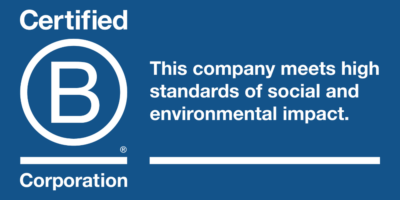Nice Market Lyft!
From a performance standpoint, the first quarter of 2019 was essentially the inverse of the previous quarter; in Q4 2018 it was hard to find a winner whereas this quarter it was hard to find a loser. The market experienced the best first quarter in over 20 years, a sharp 180 from December’s performance which was the worst since 1931. The volatility in the market is proof that investors are better off staying focused on the long-term and ignoring market gyrations. Those that hyper focus when markets are falling often end up selling out at the bottom.
We do not believe that the markets are in the clear after the fourth quarter rout. To the contrary, after examining the yield curve, we think that even with the Federal Reserve’s u-turn on monetary policy, it still pays to be conservative at this point in the economic cycle. The yield curve (the measure of interest rates across time periods) is normally upward sloping. The reason behind this is that the longer you lend your money, the higher the risk is that something can go wrong, so you should receive a higher yield. You see this with CD deposits at banks (here the depositor is lending the bank money). The longer the CD is locked up, the more interest the depositor will receive.
Today, the yield curve is flat and was even inverted for a short period of time in the last 90 days. A flat-to-inverted curve is a very early warning sign that we are in the latter innings of an economic expansion – it feels like the 8th or 9th inning to us. The problem is you never know how long each inning will last. Over the last 40 years, once the curve inverts it takes anywhere from less than a year to three years until a recession hits. So, while an inversion is not a sign of an imminent bear market nor a sign to immediately sell stocks, it is a time to be more cautious.
Other signs of peaking cycles are IPO hysteria. Lyft went public in late March to raise money. They lost close to $1B last year and stated in their filings that they may never make money.[1] Somewhat shockingly, demand for the IPO was so high they raised the price above the expected range. We did not participate as we prefer companies that can grow and make money at the same time.
If the markets can continue going up at this rate, we will end the year up over 50% – this is extremely unlikely. We don’t expect a repeat of last quarter and continue to focus on companies with solid fundamentals and strong balance sheets. Below we discuss in detail recent activity in our small and large strategies.
All the best,
| Adam | Cindy | Laura | Matt | Nathan |
SMID Strategy
Small and mid-cap stocks had a banner first quarter. We try to keep pace in up markets and do better when markets decline. When the market rallies like it did this quarter we normally trail, but this time we held our own and performed inline.
We had several standout performers with three companies gaining over 30% in the quarter: Iridium Communications (IRDM), Catchmark Timber (CTT) and Hannon Armstrong (HASI) – a stock we had just bought in December.[2] The only company that had a noticeable negative impact on performance was Agrofresh which was down 13%. They sell numerous products to keep food fresh and had a disappointing report for Q4 earnings which was primarily driven by poor weather. We are still believers in the CEO and his strategy and continue to hold.
We sold two holdings which were both first purchased when we launched: Extended Stay America (STAY) and Oil- Dri (ODC). Extended Stay performed well since we initially purchased. The sale was mainly driven by a desire to de-risk. They are one of the more economically sensitive holdings and we found a better opportunity for the capital. We also parted ways with Oil-Dri. We’d like to think we helped in their decision to add their first female to their board (we wrote a letter to the board urging them to diversify) but the main driver behind closing out the position was that we lost patience with the speed at which their sales grew.
We only added one new name in the quarter, Verso Corp (VRS). It is a company we learned about over a year ago, but had trouble buying as it only went up. That changed. Verso is one of only two major paper manufacturers left in the US that makes coated and uncoated free sheet or printing paper. They also manufacture pulp and containerboard amongst other products. The company came out of bankruptcy in 2016 and had over $450mm of debt.
At the end of last year, they had paid off all their debt and now are in the enviable position of deciding what to do with all the cash they generate. The company has a market value of ~$760 million and we calculate they could generate over $170 million of free cash flow this year (22% cash on cash return) and they should generate more in 2020.
The paper market is going the way of the buggy whip, but we think it will take a long time before it gets there. Paper demand has been declining at about a 6% rate per year and the decline will continue. The supply of paper has been declining at a faster clip than demand which gives Verso the ability to increase their prices. The Amazon effect is a big driver of the conversion in paper production. With products shipped everywhere now, containerboard is in much greater demand. Many plants have therefore converted from paper to cardboard production. The US no longer produces enough paper to supply its own needs and therefore we must import paper from Europe. However, Europe is following in the US’s footsteps and some of the largest paper producers have announced plans to convert. This will greatly benefit Verso in 2020.
The company has published sustainability reports for several years and one highlight from their last report shows surface water use down 10% and groundwater use down 17.5% in 2017.
Large Strategy
Large capitalization stocks increased in Q1, but less so than small and mid-capitalization stocks. Relative to its benchmark, the Russell 1000 Value, our Large Strategy underperformed for the quarter. We expect to lag in very strong markets but trailed by more than we would have liked.
We were quite active again on the trading front in the quarter; four positions were sold and replaced with four new positions. Three of the names were poor performers for us; Newell Brands (NWL), Century Link (CTL) and CVS (CVS). They each have had their own issues and while all three remain undervalued, we fear they could be value traps. We bought four new names, all of which in a short time have had a positive contribution.
Newmont Mining (NEM) primarily explores for, acquires, develops, and produces gold. They are currently in the process of acquiring Goldcorp making it one of the largest gold producers in the world. NEM is an investment in the price of gold going higher, a hedge against the dollar and yields declining. NEM’s assets are mostly in the United States and Australia, which are less politically volatile areas than other miners. Since purchasing the stock, the Federal Reserve has become dovish (less inclined to raise rates), helping gold go higher. Many of the gold miners have robust ESG efforts, including NEM, and its board goes a step further and links 5% of pay to ESG performance.
Dollar Tree (DLTR) is a unique investment that is defensive with near-term catalysts that can drive the stock higher. Deep discount stores are less economically sensitive in an economic slowdown or a recession and DLTR has an activist investor in the name pushing for change. Two material opportunities for the company are breaking the dollar (selling products for more than $1), and a faster pace of renovations and re-banners from Family Dollar brand to the more popular Dollar Tree brand. Both opportunities were discussed by management in the Q4’18 earnings conference call and the stock has responded positively to the news. On the ESG front, DLTR has a sustainability program called Dollar Tree Cares that focuses on product sourcing, reducing environmental impact, and reinvesting in its communities.
Nokia (NOK), a Finnish technology company, is a leading provider of telecommunications equipment globally. Wireless telecommunications companies are beginning to build network technology which will allow wireless phones and other devices to stream video and perform other high-bandwidth tasks which are not possible today, given the constraints of current 4G networks. Nokia is well-positioned to capitalize on the new 5G standard for wireless networks. In addition, Nokia scored 21 out of a possible 25 points on our ESG (Environmental, Social and Governance) rating system, making it one of our top-performing companies for social responsibility.
Thermo Fisher Scientific Inc. (TMO), is a world leader in serving science innovation, with revenues of more than $20 billion, serving 400,000 customers in 150 countries. Customers include pharmaceutical and biotech companies, hospitals, clinical diagnostic labs, universities, research institutions, government agencies, and environmental/industrial firms using quality and process controls. TMO’s mission is to enable customers to make the world healthier, cleaner, and safer by helping accelerate life sciences research, solving complex analytical challenges, improving patient diagnostics, delivering medicines to market and increasing laboratory productivity. It’s a mouthful! TMO has a long track record of growing organically and layering in acquired businesses to broaden its portfolio of solutions for customers around the world.
DISCLAIMER: Past performance is not indicative of future results. The securities identified and described do not represent all of the securities purchased, sold or recommended for client accounts. The reader should not assume that an investment in the securities identified was or will be profitable.
[1] The company states explicitly in the risks section of the prospectus: “We have a history of net losses and we may not be able to achieve or maintain profitability in the future.” https://www.sec.gov/Archives/edgar/data/1759509/000119312519059849/d633517ds1.htm
[2] We also bought Zebra Tech in the fourth quarter, but it was only up 29%.








